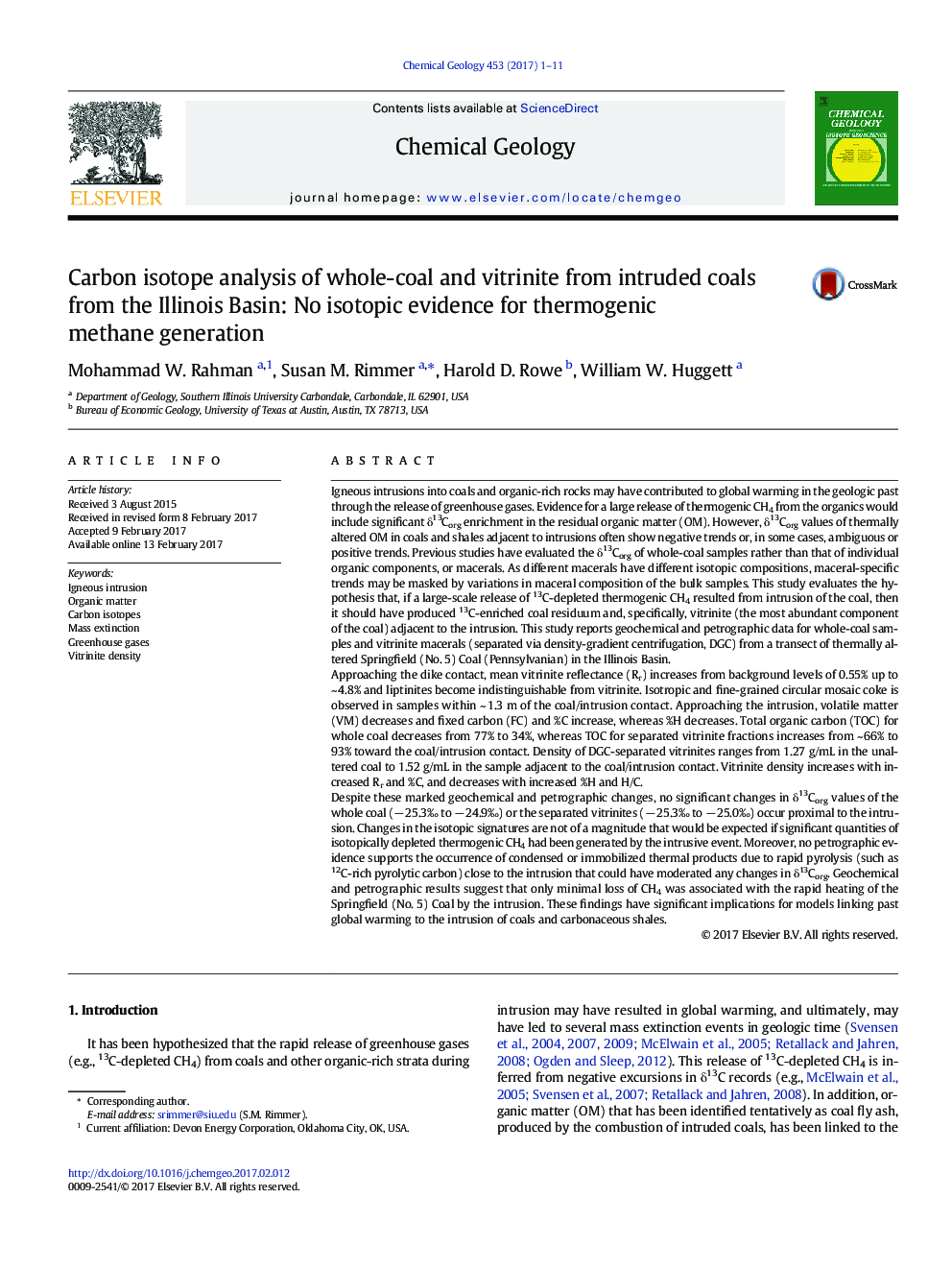| Article ID | Journal | Published Year | Pages | File Type |
|---|---|---|---|---|
| 5782906 | Chemical Geology | 2017 | 11 Pages |
Abstract
Despite these marked geochemical and petrographic changes, no significant changes in δ13Corg values of the whole coal (â 25.3â° to â 24.9â°) or the separated vitrinites (â 25.3â° to â 25.0â°) occur proximal to the intrusion. Changes in the isotopic signatures are not of a magnitude that would be expected if significant quantities of isotopically depleted thermogenic CH4 had been generated by the intrusive event. Moreover, no petrographic evidence supports the occurrence of condensed or immobilized thermal products due to rapid pyrolysis (such as 12C-rich pyrolytic carbon) close to the intrusion that could have moderated any changes in δ13Corg. Geochemical and petrographic results suggest that only minimal loss of CH4 was associated with the rapid heating of the Springfield (No. 5) Coal by the intrusion. These findings have significant implications for models linking past global warming to the intrusion of coals and carbonaceous shales.
Related Topics
Physical Sciences and Engineering
Earth and Planetary Sciences
Geochemistry and Petrology
Authors
Mohammad W. Rahman, Susan M. Rimmer, Harold D. Rowe, William W. Huggett,
